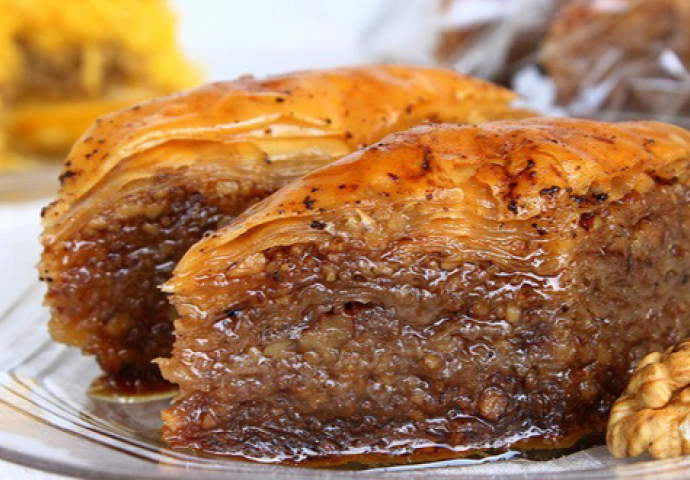Baklava

Baklava is a rich, sweet pastry made of layers of filofilled with chopped nuts and sweetened and held together with syrup or honey. It is characteristic of the cuisines of the former Ottoman Empire.
The word baklava is first attested in English in 1650, a borrowing from Ottoman Turkish word. The name baklava is used in many languages with minor phonetic and spelling variations. Although the history of baklava is not well documented, there is evidence that its current form was developed in the imperial kitchens of the Topkapı Palace in Istanbul.
Baklava is normally prepared in large pans. Many layers of phyllo dough, separated with melted butter and oil, are laid in the pan. A layer of chopped nuts are also sometimes used. It is placed on top, then more layers of phyllo. Most recipes have multiple layers of phyllo and nuts, though some have only top and bottom pastry.
Before baking, the dough is cut into regular pieces, often parallelograms, triangles, diamonds or rectangles. After baking, a syrup, which may include honey, rosewater, or orange flower water, is poured over the cooked baklava and allowed to soak in.
Baklava is usually served at room temperature, often garnished with ground nuts.